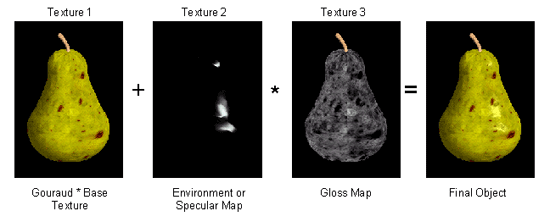The Chip
 The
Rage6C core is unlike any other core that ATI has designed. The core is not
a refresh of the aging Rage128 core but a new product completely. Not much has
changed since the Radeon's announcement in April, but let's review what we already
know and see what one item has changed.
The
Rage6C core is unlike any other core that ATI has designed. The core is not
a refresh of the aging Rage128 core but a new product completely. Not much has
changed since the Radeon's announcement in April, but let's review what we already
know and see what one item has changed.
For the most part, what ATI said they would deliver with a Radeon card has found its way into the shipping cards. As suspected, the architecture of the chip is .18 micron with two rendering pipelines with three texture units per pipeline for a total output of 6 texels per clock. Having 2 less texels per clock of the GeForce 2 GTS, with its four pipelines and 2 textures per pipe, in theory the Radeon is crippled by these pipelines.

The reason for this is that dual texture games, such as Quake III Arena, will actually end up not using one of the textures in the Radeon's three texture pipeline. The GeForce 2 GTS's pipeline does not encounter this problem in dual texture games since each pipeline is able to use both texture units for rendering.
The tables become turned, however, when a scene being rendered has three or more textures per pixel. In this case, the Radeon's pipeline architecture is capable of using each texture unit in rendering, resulting in one pass per pixel rendered. The GeForce 2 GTS, on the other hand, relies on two of its pipelines to render a single pixel in a three textured game, with one pipeline rendering two textures and a second one rendering the third, leaving the second texture in the second pipeline wasted. Although few games use 3 textures per pixel, ATI is betting on this to become the embraced standard.

The second part to ATI's decision to use a three texture unit pipeline comes from the fact that texels simply do not add speed due to memory bandwidth limitations. This can be seen in the GeForce 2 GTS: while the GPU is capable of pushing out 1.6 gigatexels per second, this fill rate is never seen due to the extensive memory bandwidth limitations encountered.










2 Comments
View All Comments
Thatguy97 - Tuesday, May 5, 2015 - link
ahh i remember anadtechs jihad against atiwow im dating myself
Frumious1 - Monday, August 29, 2016 - link
I don't remember it at all. The only thing I recall is a bunch of whiny ass fanboys complaining when their chosen CPU, GPU, etc. didn't get massive amounts of acclaim. The very first Radeon cards were good, but they weren't necessarily superior to the competition. You want a good Radeon release, that would be the 9700 Pro and later 9800 Pro -- those beat Nvidia hands down, and AnandTech said as much.